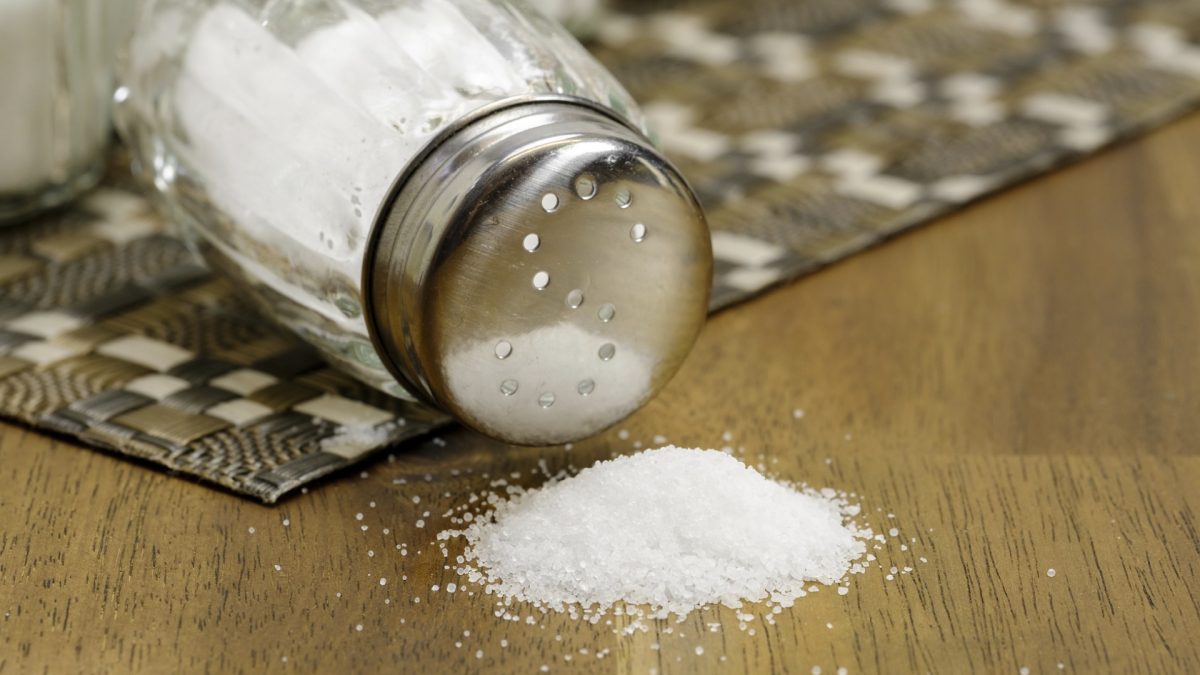Reduction of salt consumption by just 15 percent could save the lives of millions. If we cut our salt intake by half a teaspoon a day, which is achievable simply by avoiding salty foods and not adding salt to our food, we might prevent 22 percent of stroke deaths and 16 percent of fatal heart attacks—potentially helping more than if we were able to successfully treat people with blood pressure pills. As I discuss in my video Salt of the Earth: Sodium and Plant-Based Diets, an intervention in our kitchens may be more powerful than interventions in our pharmacies. One little dietary tweak could help more than billions of dollars worth of drugs.
What would that mean in the United States? Tens of thousands of lives saved every year. On a public-health scale, this simple step “could be as beneficial as interventions aimed at smoking cessation, weight reduction, and the use of drug therapy for people with hypertension or hypercholesterolemia,” that is, giving people medications to lower blood pressure and cholesterol. And, that’s not even getting people down to the target.
A study I profile in my video shows 3.8 grams per day as the recommended upper limit of salt intake for African-Americans, those with hypertension, and adults over 40. For all other adults the maximum is 5.8 daily grams, an upper limit that is exceeded by most Americans over the age of 3. Processed foods have so much added salt that even if we avoid the saltiest foods and don’t add our own salt, salt levels would go down yet still exceed the recommended upper limit. Even that change, however, might save up to nearly a hundred thousand American lives every year.
“Given that approximately 75% of dietary salt comes from processed foods, the individual approach is probably impractical.” So what is our best course of action? We need to get food companies to stop killing so many people. The good news is “several U.S. manufacturers are reducing the salt content of certain foods,” but the bad news is that “other manufacturers are increasing the salt levels in their products. For example, the addition of salt to poultry, meats, and fish appears to be occurring on a massive scale.”
The number-one source of sodium for kids and teens is pizza and, for adults over 51, bread. Between the ages of 20 and 50, however, the greatest contribution of sodium to the diet is not canned soups, pretzels, or potato chips, but chicken, due to all the salt and other additives that are injected into the meat.
This is one of the reasons that, in general, animal foods contain higher amounts of sodium than plant foods. Given the sources of sodium, complying with recommendations for salt reduction would in part “require large deviations from current eating behaviors.” More specifically, we’re talking about a sharp increase in vegetables, fruits, beans, and whole grains, and lower intakes of meats and refined grain products. Indeed, “[a]s might be expected, reducing the allowed amount of sodium led to a precipitous drop” in meat consumption for men and women of all ages. It’s no wonder why there’s so much industry pressure to confuse people about sodium.
The U.S. Dietary Guidelines recommend getting under 2,300 milligrams of sodium a day, while the American Heart Association recommends no more than 1,500 mg/day. How do vegetarians do compared with nonvegetarians? Well, nonvegetarians get nearly 3,500 mg/day, the equivalent of about a teaspoon and a half of table salt. Vegetarians did better, but, at around 3,000 mg/day, came in at double the American Heart Association limit.
In Europe, it looks like vegetarians do even better, slipping under the U.S. Dietary Guidelines’ 2,300 mg cut-off, but it appears the only dietary group that nails the American Heart Association recommendation are vegans—that is, those eating the most plant-based of diets.
This is part of my extended series on sodium, which includes:
- High Blood Pressure May Be a Choice
- Sprinkling Doubt: Taking Sodium Skeptics with a Pinch of Salt
- The Evidence That Salt Raises Blood Pressure
- Sodium Skeptics Try to Shake Up the Salt Debate
- Shaking the Salt Habit
- Sodium and Arterial Function: A-Salting Our Endothelium
If you’re already cutting out processed foods and still not reaching your blood pressure goals, see:
- Wakame Seaweed Salad May Lower Blood Pressure
- Hibiscus Tea vs. Plant-Based Diets for Hypertension
- Flaxseeds for Hypertension
- How to Prevent High Blood Pressure with Diet
- How Not to Die from High Blood Pressure
- How to Treat High Blood Pressure with Diet
- Oxygenating Blood with Nitrate-Rich Vegetables
In health,
Michael Greger, M.D.
PS: If you haven’t yet, you can subscribe to my free videos here and watch my live, year-in-review presentations:
- 2012: Uprooting the Leading Causes of Death
- 2013: More Than an Apple a Day
- 2014: From Table to Able: Combating Disabling Diseases with Food
- 2015: Food as Medicine: Preventing and Treating the Most Dreaded Diseases with Diet
- 2016: How Not To Die: The Role of Diet in Preventing, Arresting, and Reversing Our Top 15 Killers
